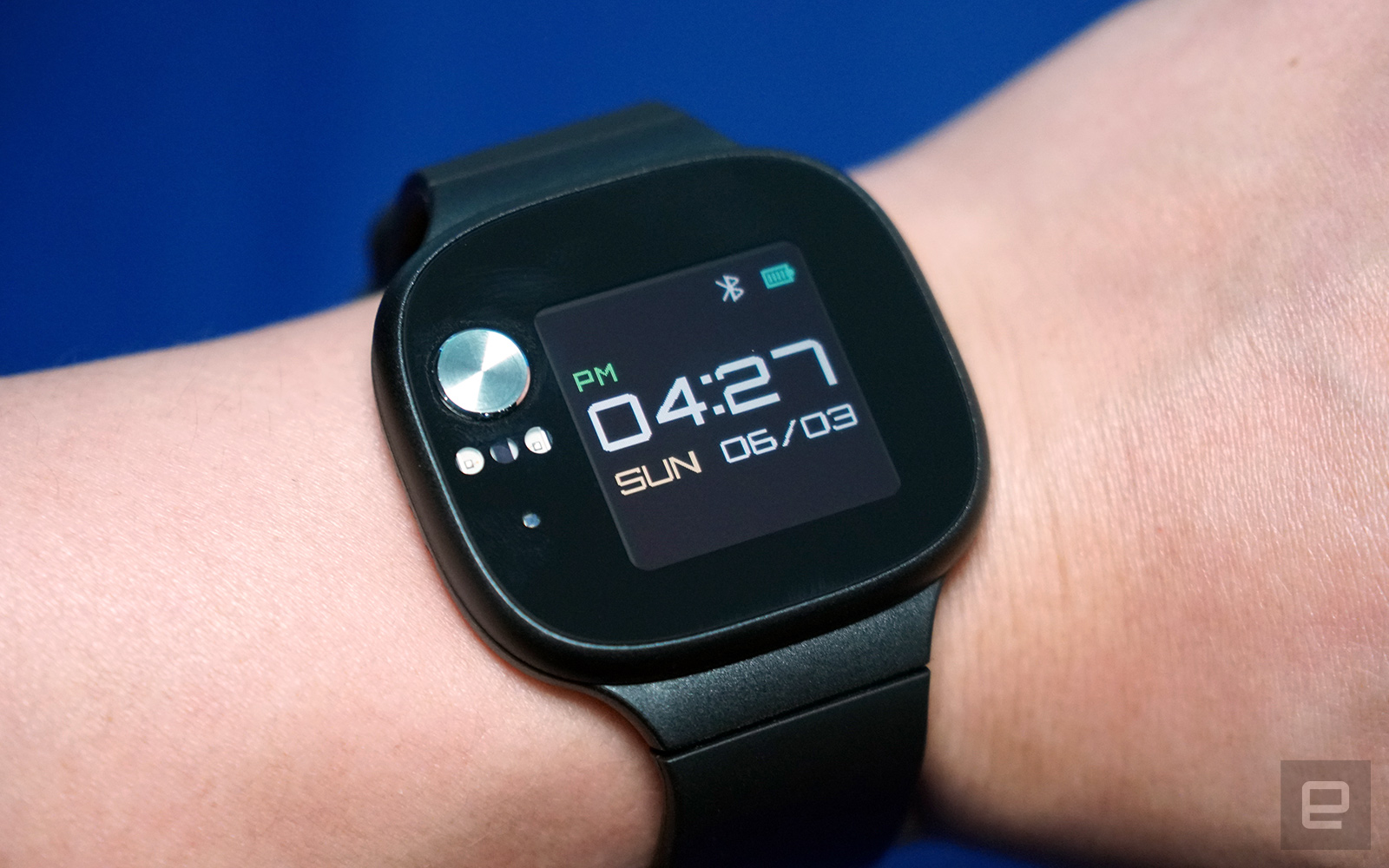 ASUS may well have pulled out of the Android smartwatch market after its ZenWatch 3, but it's actually not quite done yet with wearables. At Computex, the company made a little surprise by unveiling the VivoWatch BP, which is a follow-up to the original low-power VivoWatch from three years ago. We're looking at a handful of new features and improvements here, with the main highlight being the built-in blood pressure monitor -- a rare feature in the smartwatch category. The only other recent direct competitor is the Omron HeartGuide, which is also due to lau nch later this year. The VivoWatch BP won't be winning praises for its appearance. While the previously monochromatic high-reflective display has now gained some colors, it's also gained a much thicker bezel to accommodate extra sensors on the front. The screen is positioned in a way that makes the bezel a little top heavy, which was something I noticed on the original model as well. Unlike the HeartGuide which uses an inflatable cuff, the VivoWatch BP's blood pressure monitor relies on both electrocardiographic (ECG) sensors and photoplethysmographic (PPG aka "optical") sensors. There's no word on whether this implementation is any less accurate, but just to be sure, there's one of each type of sensor on both the front and back of the watch. To take a reading, simply unlock the watch using the button on the right, swipe to blood pressure reading mode, and keep your fingertip on the front-facing ECG sensor -- the silver circular dial to the left of the screen -- for about 15 to 20 seconds. The blood pressure is recorded along with other health data, including heart rate, sleep quality, de-stress index and activity data -- the watch can now automatically tell between normal activity and exercise for a more accurate tracking. When wirelessly synchronized, the watch's companion app will use its "HealthAI" algorithm to provide personalized health advice -- mainly by recommending the number of steps and sleeping hours you need daily -- to help reduce hypertension. In case you need extra guidance and motivation, the app also lets you share this data with your family or doctor. 
As with any proper sports watch these days, the VivoWatch BP comes with GPS tracking, which was a sorely missed feature on the original version. The location can be shared with family members, which makes a nice safety precaution for elderly users or just any runner, so long as the watch is connected to a phone. Another welcomed improvement here is the 28-day battery life under "normal" usage, which is more than double that of the previous model. In terms of price and availability, the VivoWatch BP will cost $169, but it won't be hitting the US until Q2 or Q3 next year due to pending FDA approval. However, it'll be available in Asia first by end of July this year. Given how this model fixes most of the earlier pain points while offering a unique function, ASUS stands a good chance of gaining traction in the healthcare wearables market this time round, but that's assuming the device will pass all the relevant tests. Click here to catch up on all the latest news from Computex 2018!
via Engadget RSS Feed https://ift.tt/2JvregS |
Comments
Post a Comment